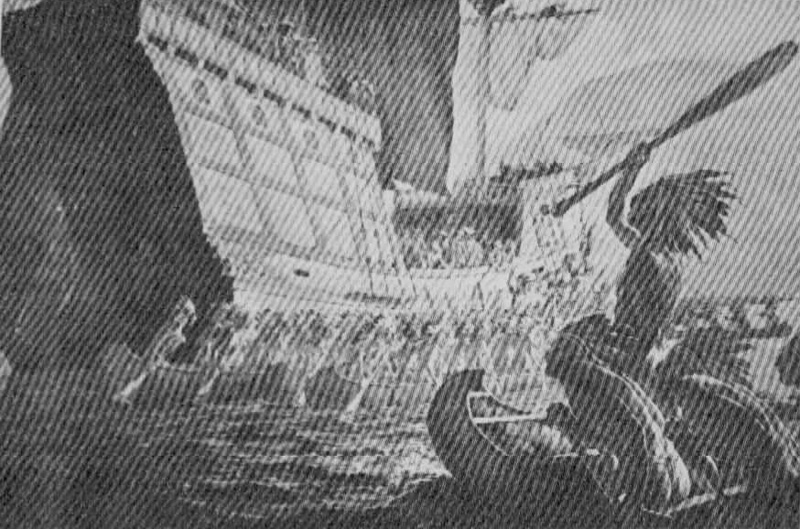
HISTORICAL EVENTS THAT TOOK PLACE ON THIS DAY IN CANADA
10 October

Champlain's arrival at Quebec
Champlain Wounded
After Champlain founded Quebec in 1608 he wanted to explore inland. In order to do this he had to be on friendly terms with the Montagnais Indians in the Montreal area, and their allies, the Algonquins and Hurons farther inland. This meant joining those three tribes in their wars against the Iroquois. It was a decision that cost France dearly in years to come as the Iroquois were far better fighters.
Champlain made a big hit with his Indian allies in 1609 when he accompanied them to what is now Crown Point, Lake Champlain, and used firearms on the Iroquois for the first time. He even drew a picture of the scene. His Indians won a great victory over the dreaded Iroquois and Champlain was "in" solidly. The trouble was that his Indians wanted repeat performances, and arranged a really big campaign for 1615. When he returned from a trip to France they met him at Tadoussac, and urged him to go to the Huron country between Lake Simcoe and Georgian Bay. He would lead 2,500 Hurons in an invasion of Iroquois country.
Champlain was delighted to have the opportunity to explore so far and arrived at the chief Huron village of Cahiagué (now Hawkestone) in September. He had traveled up the Ottawa River to the Mattawa, and then on to Lake Nipissing. From there he turned south until he came to a body of water so large that he could hardly believe his eyes. He called it Mer Douce, or Fresh Water Sea. It was Georgian Bay.
The plan was to attack the Onondagas, and wipe them out. The Hurons were confident that they could do it with the help of Champlain and his men, armed with guns. The attack on October 10, 1615, was a failure. The Indians had no leader of their own and could not be controlled. They were so overconfident that they would not travel quietly, and the Iroquois at Onondaga knew they were coming. They would not use their usual shields when they attacked and the Iroquois mowed them down with their arrows. Champlain and his men used their guns, but the Onondagas were brave and accepted their losses. The battle was over in three hours. Champlain was wounded, having been hit in the leg by an arrow, and had to be carried away. The Hurons were supposed to take the French back to Quebec, but they refused to do so. Champlain had to spend the winter at Cahiagué. It was an uncomfortable, sometimes disgusting experience, but Champlain learned a great deal about Indian lore during the winter months, and wrote a book about his sojourn there (see January 9).
OTHER NOTABLE EVENTS ON THIS DAY IN CANADIAN HISTORY
10 October
-1792 Alexander Mackenzie left Lake Athabaska for a trip to the Pacific (see July 22).
-1864 Delegates from Canada and the Atlantic Provinces gathered at Quebec to draw up a framework for Confederation. The conference lasted until October 28.
-1878 The Liberal government under Alexander Mackenzie resigned after their election defeat. The Conservatives under Sir John A. Macdonald came into power.
-1911 Sir Robert Borden succeeded Sir Wilfrid Laurier as prime minister.
-1950 Canada and the United States ratified the Hydro Power Treaty.